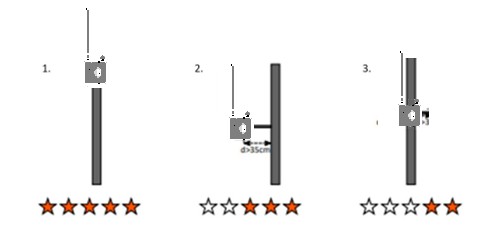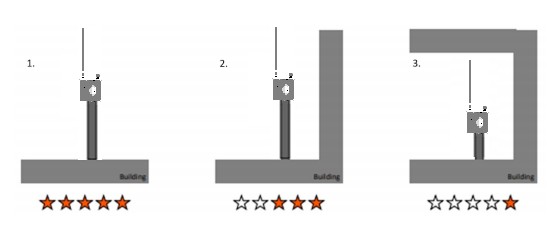G-1090 Placement Guidelines
Aviation signals transmitted at 1090 MHz, including ADS-B, Mode S, Mode A/C, and FLARM, can only be detected within the line of sight (LOS). This means that your receiver will capture air traffic data only in areas that are visible from the installation point. Any obstructions, such as mountains, buildings, or trees, will impede reception in the direction of those barriers.
To maximize coverage, we strongly advise installing the device on elevated locations such as hilltops, building rooftops, light poles, or any tall, isolated structures.
The G-1090 air traffic receiver is engineered for use in environments with significant electromagnetic interference, like telecommunication towers; however, it is best to keep the receiver as far from emitting devices as possible.
The G-1090 receiver is suitable for both outdoor and indoor installations, especially in wooden structures.
Attached to a pole

For optimal installation, the G-1090 receiver should be positioned on top of a pole, ensuring that the antennas are unobstructed by the pole itself (1.). If this is not feasible, it is advisable to maintain a distance of at least 35 to 45 cm between the antennas and the pole (2. and 3.) to avoid signal reflections. Additionally, it is strongly advised to avoid installing the receiver behind other devices or too close to any emitting equipment, as this can negatively impact the reception performance of the G-1090.
On a building

The antenna should ideally be mounted at the highest point of the structure (1.). If this is not feasible, the receiver must be positioned to enhance the line of sight (2.). It is advisable to avoid installation within concrete buildings (3.), although placing the receiver inside wooden structures is a viable option.